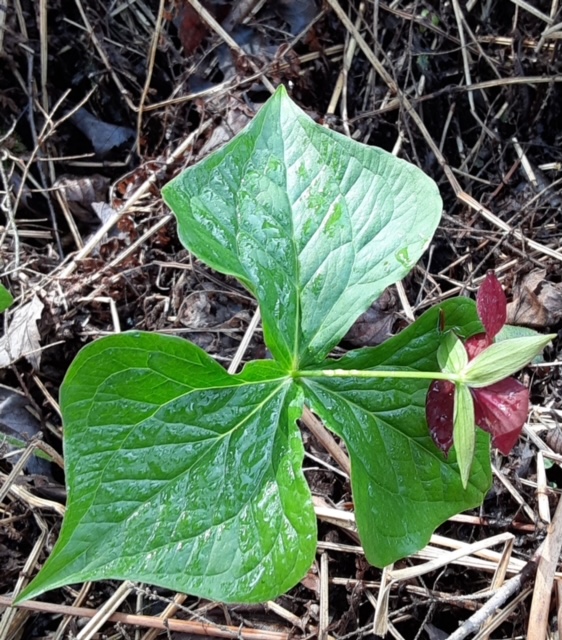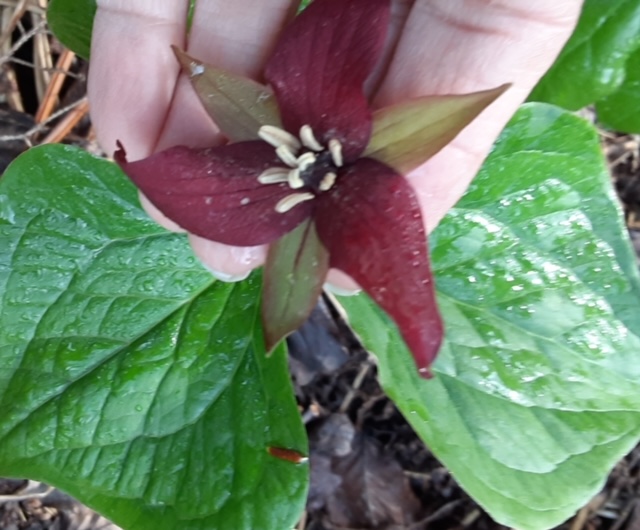By: Susan Sprout
This herbaceous native has had a whole lot of names, common and scientific! So far, it has been identified as a member of three different families. As luck would have it, DNA evidence landed it back in one of them – LILIACEAE – the Lily Family!

Trilliums just don’t have the expected lily-like parallel veins on their leaves, but rather netted ones, that crisscross and meet up again across their surface. Each common name of Red Trillium helps describe some aspect of the plant. “Wake-robin” harkens its standout red bloom to the early arriving robin. “Stinking Benjamin” tells of the malodorous scent of its single flower used to attract carrion flies and beetles to pollinate it. “Birthwort” reminds us that its root was once used in tea made for new mothers. The “tri” in trillium is for three – three triangular-shaped leaves, three red to purple petals, three greenish-red sepals that protected the bud before it opened and remain under the petals.
This species of trillium has an erect stem, “erectum”, up to four inches long, holding the flower head above the leaves. It does have the habit of curling back down under the leaves, so you sometimes have to look under to find the flower. I discovered this flower near a woods road in the state forest where Laurel and Rhododendrons grow in rich wet to dry acid soil.

An ephemeral plant, Trillium can grow to twenty-four inches in height even with its short life cycle: blooming from April to June, setting seed, then dying back to its rhizomes underground for the rest of the year. This is how Trillium takes advantage of the high levels of early spring sunlight before the trees above leaf-out and block it. Smart!

